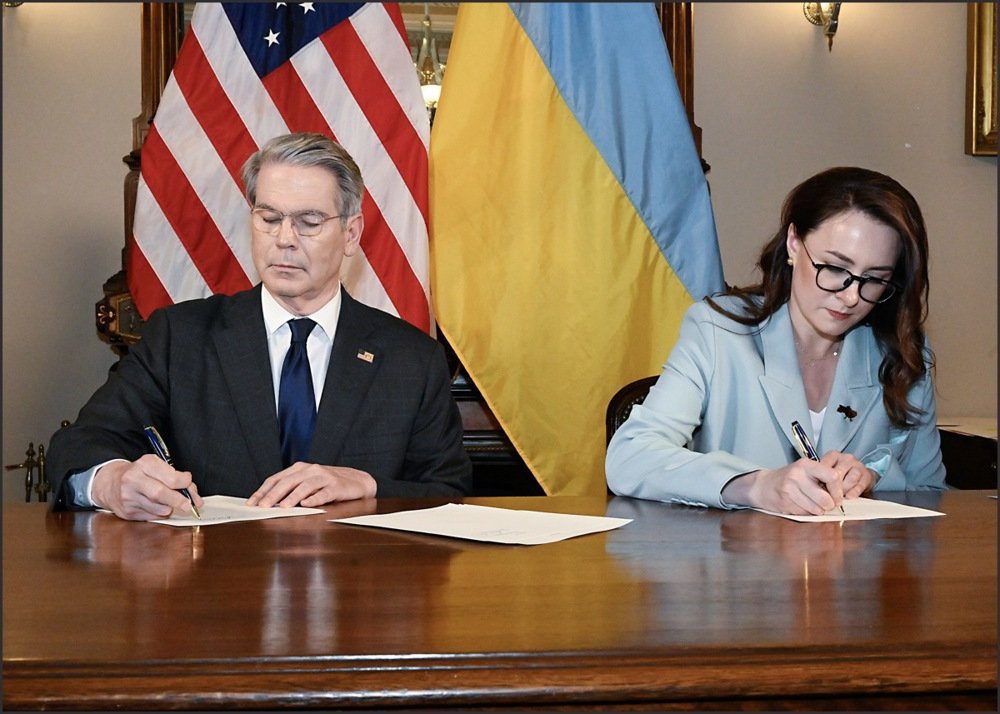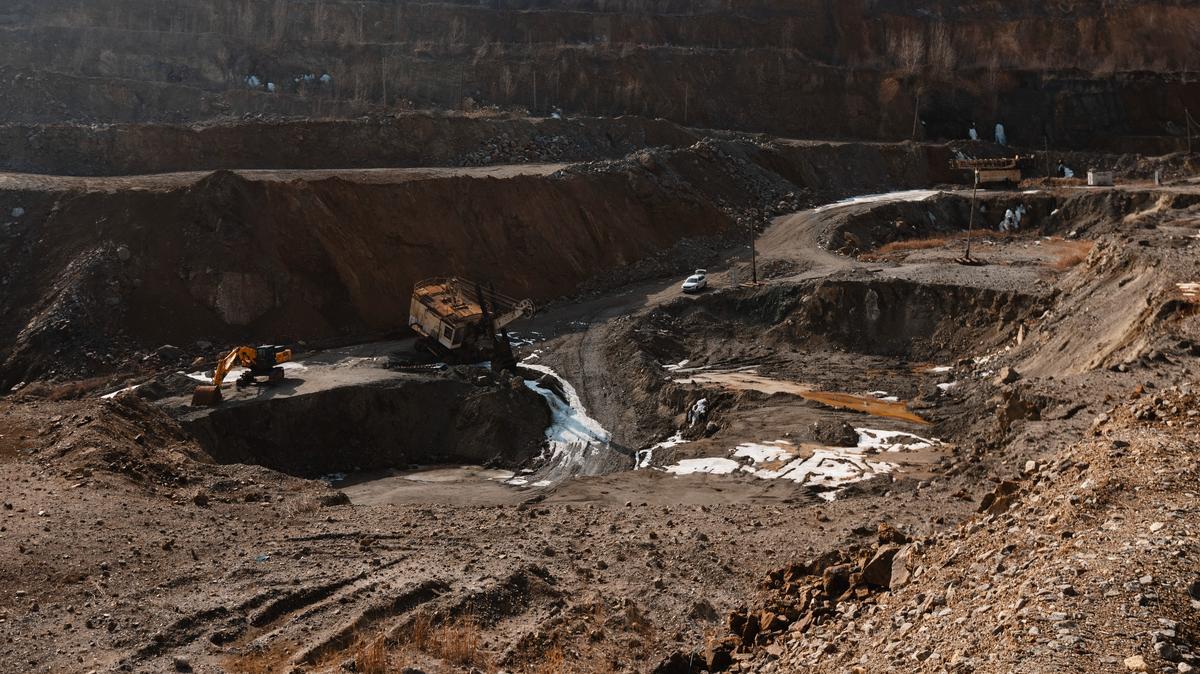Last week, the Trump administration signed a deal with Ukraine that gives it privileged access to Ukraine’s natural resources. Some news outlets described the deal as Ukrainian President Volodymyr Zelensky “caving” to US President Donald Trump’s demands. But we see the agreement as the result of clever bargaining on the part of Ukraine’s war-time president. So, what does the deal mean for Ukraine? And will this help strengthen America’s mineral supply chains?
Ukraine is home to 5% of the world’s critical mineral wealth, including 22 of the 34 minerals identified by the European Union as vital for defence, construction and high-tech manufacturing. However, there’s a big difference between resources — what’s in the ground — and reserves — what can be commercially exploited. Ukraine’s proven mineral reserves are limited. Further, Ukraine has an estimated mineral wealth of around US$14.8 trillion, but more than half of this is in territories currently occupied by Russia.
But the first iteration of the Ukraine mineral deal, which Zelensky rejected in February, had been an especially brazen resource grab by Trump’s government.
American support for overseas conflict is usually about securing US economic interests — often in the form of resource exploitation. From the Middle East to Asia, US interventions abroad have enabled access for American firms to other countries’ oil, gas and minerals. But the first iteration of the Ukraine mineral deal, which Zelensky rejected in February, had been an especially brazen resource grab by Trump’s government. It required Ukraine to cede sovereignty over its land and resources to one country, the US, in order to defend itself from attacks by another, Russia.
These terms were highly exploitative of a country fighting against a years-long military occupation. In addition, they violated Ukraine’s constitution, which puts the ownership of Ukraine’s natural resources in the hands of the Ukrainian people. Were Zelensky to accept this, he would have faced a tremendous backlash from the public. In comparison, the new deal sounds like a strategic and — potentially — commercial win for Ukraine. First, this agreement is more just, and it’s aligned with Ukraine’s short- and medium-term interests. Zelensky describes it as an “equal partnership” that will modernise Ukraine.

US President Donald Trump meets with Ukrainian President Volodymyr Zelensky in the Oval Office, Washington, 28 February 2025. EPA-EFE/JIM LO SCALZO
Under the terms, Ukraine will set up a United States–Ukraine Reconstruction Investment Fund for foreign investments into the country’s economy, which will be jointly governed by both countries. Ukraine will contribute 50% of the income from royalties and licences to develop critical minerals, oil and gas reserves, while the US can make its contributions in-kind, such as through military assistance or technology transfers.
Ukraine maintains ownership over its natural resources and state enterprises. And the licensing agreements will not require substantial changes to the country’s laws, or disrupt its future integration with Europe. Importantly, there is no mention of retroactive debts for the US military assistance already received by Ukraine. This would have created a dangerous precedent, allowing other nations to seek to claim similar debts from Ukraine. Finally, the deal also signals the Trump administration’s commitment to “a free, sovereign and prosperous Ukraine” – albeit, still without any security guarantees.
It’s possible, however, that profits are a secondary calculation for the US. Boxing out China is likely to be as, if not more, important.
Unsurprisingly, the Trump administration and conservative media in the US are framing the deal as a win. For too long, Trump argues, Ukraine has enjoyed US taxpayer-funded military assistance, and such assistance now has a price tag. The administration has described the deal to Americans as a profit-making endeavour that can recoup monies spent defending Ukrainian interests. But in reality, profits are a long way off.
The terms of the agreement clearly state the fund’s investment will be directed at new resource projects. Existing operations and state-owned projects will fall outside the terms of the agreement. Mining projects typically work within long time frames. The move from exploration to production is a slow, high-risk and enormously expensive process. It can often take over a decade. Add to this complexity the fact that some experts are sceptical Ukraine even has enormously valuable reserves. And to bring any promising deposits to market will require major investments.

US Treasury Secretary Scott Bessent and Ukraine’s Economy Minister Yulia Svyrydenko sign an agreement in Washington, DC, USA, 30 April 2025. Photo: EPA-EFE/US DEPARTMENT OF THE TREASURY
It’s possible, however, that profits are a secondary calculation for the US. Boxing out China is likely to be as, if not more, important. Like other Western nations, the US is desperate to diversify its critical mineral supply chains. China controls not just a large proportion of the world’s known rare earths deposits, it also has a monopoly on the processing of most critical minerals used in green energy and defence technologies.
The US fears China will weaponise its market dominance against strategic rivals. This is why Western governments increasingly make mineral supply chain resilience central to their foreign policy and defence strategies. Given Beijing’s closeness to Moscow and their deepening cooperation on natural resources, the US-Ukraine deal may prevent Russia — and, by extension, China — from accessing Ukrainian minerals. The terms of the agreement are explicit: “states and persons who have acted adversely towards Ukraine must not benefit from its reconstruction”.
Finally, the performance of “the deal” matters just as much to Trump. Getting Zelensky to sign on the dotted line is progress in itself, plays well to Trump’s base at home, and puts pressure on Vladimir Putin to come to the table. So, the deal is a win for Zelensky because it gives the US a stake in an independent Ukraine. But even if Ukraine’s critical mineral reserves turn out to be less valuable than expected, it may not matter to Trump.
Dr Eve Warburton is a senior lecturer at the Department of Political and Social Change in the Coral Bell School of Asia Pacific Affairs and Dr Olga Boichak is a Senior Lecturer in Digital Cultures at the University of Sydney.
This article was first published by The Conversation. Views expressed in opinion pieces do not necessarily reflect the position of Novaya Gazeta Europe.
Join us in rebuilding Novaya Gazeta Europe
The Russian government has banned independent media. We were forced to leave our country in order to keep doing our job, telling our readers about what is going on Russia, Ukraine and Europe.
We will continue fighting against warfare and dictatorship. We believe that freedom of speech is the most efficient antidote against tyranny. Support us financially to help us fight for peace and freedom.
By clicking the Support button, you agree to the processing of your personal data.
To cancel a regular donation, please write to [email protected]

